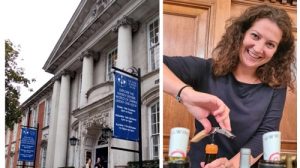Following the 2014 En Primeur tastings last month – when the wine world quite literally descended on Bordeaux – a group of grands crus producers recently crossed the English Channel to present their 2011 to 2014 wines to London’s trade and media.
A matter of price
The price of Bordeaux is constantly in the limelight, from the hype surrounding the annual En Primeur campaigns, to the high auction prices often achieved by prestigious first growths. While prices of the top wines have been slowing over the last year (the iDealwine iDealwine indicefor Bordeaux registered a decrease for the previous 12 months), prices are recovering and managed to slightly increase by 0.53% following the April auctions. This can largely be ascribed to the currency effect, but also the success of Pomerol’s star, Petrus.
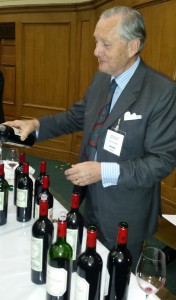
Bordeaux remains a favourite for both investors and consumers around the world, and its wines are sold in some 170 countries – offering significant development prospects for iDealwine, who currently serves 45 countries.
Steeped in history and tradition, it is now 160 years ago that the 1855 classification for the wines of Gironde was published. Established at the request of Emperor Napoleon III for the presentation of those wines at the Exposition Universelle in Paris, Philippe Castéja recently announced the Conseil des Grands Crus Classés en 1855’s support for France as a candidate to organise the Exposition Universelle in 2025.
Philippe also reportedly started the necessary steps for the inclusion of the 1855 classification in the French Heritage inventory. A first step before setting his sights on Unesco…
It’s about the taste
Aside from the rich history and price considerations surrounding Bordeaux, we shouldn’t overlook the delicious and impressive wines themselves!
As one of the oldest properties in Bordeaux, Smith Haut Lafitte in Pessac-Léognan produces some impressive white and red wines. The 2013 Les Hauts de Smith Blanc is made from 100% Sauvignon Blanc, showing a lovely freshness and fruity, perfumy flavours; as a “second wine”, this is a great value offer. The more serious Sauvignon Blanc/Sémillon blend – Smith Haut Lafitte Blanc 2012 – is richer, with more new oak influence.
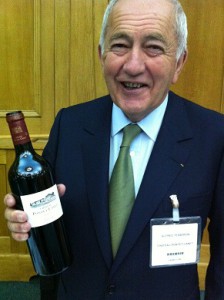
Dating back to the 18th century, Pontet-Canet in Pauillac was classified as a Grand Cru Classé in 1855. The wines are expressive, with the 2013 particularly showing a lot of fresh cranberries and silky tannins. Presenting the wines was owner Alfred Tesseron, who runs the property with his two nieces, Mélanie and Philippine, and regisseur, Jean-Michel Comme. Since 2010, all of their vineyards are certified organic and biodynamic – read more about Pontet-Canet’s sustainable approach.
Ranked as a second growth, Rauzan-Ségla in Margaux was revived under new ownership when it was purchased by Chanel in 1994. Generally consisting of 60% Cabernet Sauvignon and 40% Merlot, these wines are very elegant and generous, with soft fruit. Tasting through the range, the 2013 vintage was most impressive: a very perfumy wine, with a fresh and delicious palate.
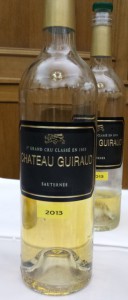 Guiraud represented the sweets of Sauternes – it is the oldest estate in the appellation, dating back to the 15th century. The 2014 Guiraud is rich, with peach nuances, while the 2013 is more earthy and spicy, with a juicy and delicious acid balance.
Guiraud represented the sweets of Sauternes – it is the oldest estate in the appellation, dating back to the 15th century. The 2014 Guiraud is rich, with peach nuances, while the 2013 is more earthy and spicy, with a juicy and delicious acid balance.
The vines of Gazin in Pomerol grow on the renowned clay-gravel plateau of this appellation. Christophe de Bailliencourt presented their Merlot-driven wines for tasting: The 2014 is smooth, with good fruit; the 2013 is spicier, with drier tannins; and the 2011 is more minerally, smooth and almost light. The 2012, however, is my personal favourite, with good richness and fresh fruit, combined with lovely soft and smooth tannins.
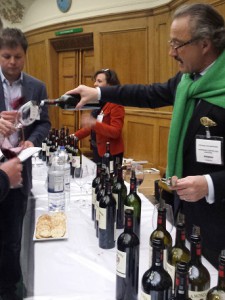
Also bought by Chanel in 1996, Canon is nestled on a limestone plateau, with the vineyards planted on gentle slopes that glide down to the village of Saint Émilion. Deputy director general, Nicola Audebert, describes the recent 2014 vintage as a “pretty” one, with the wine showing pleasant floral and fruity notes. The 2013 is fresher, more subtle and fine, while the 2011 is more powerful, with herbal and minerally characters. Again, it was the 2012 that stood out – a complex and elegant wine, with lovely and delicate fruit and spice.
Produced from 80% Merlot and 20% Cabernet Franc, the Aiguilhe (Saint Émilion) wines were presented by communication and marketing manager, Magali Malet-Serres. The 2014 shows more structure and good promise, while the 2013 is fresher and less pronounced. My favourites are the 2012 and 2011 vintages: the first is more smoky, well-rounded and juicy, while the latter has a rich nose and good freshness, with a distinct peppery character.
So whether you are looking for an investment opportunity, a special occasion bottle or simply some delicious wine, Bordeaux has something to offer. Why not browse the current iDealwine sales to find the Bordeaux that will suit your style (and pocket)?
Written by Elona Hesseling
Buy Bordeaux wine:
Smith Haut Lafitte
Pontet-Canet
Rauzan-Ségla
Guiraud
Gazin
Canon
Estimate your wines
Visit iDealwine.com


